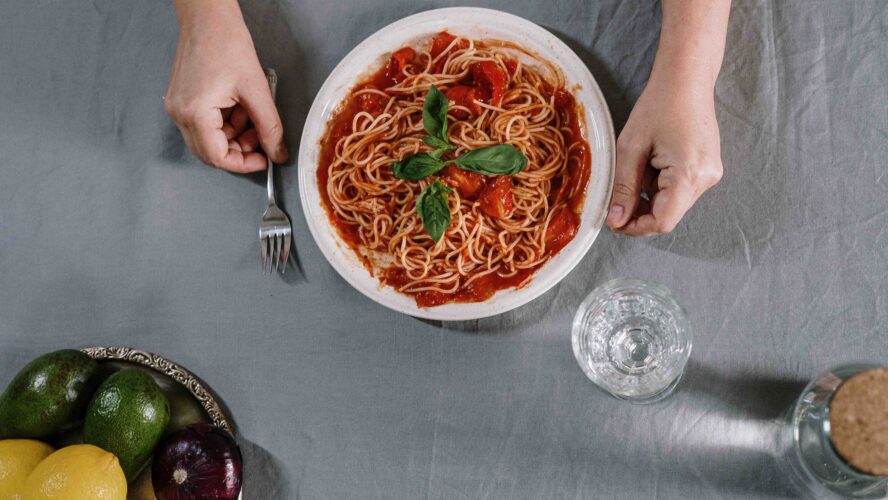
With energy bills and inflation on the rise, paying for your shopping at the supermarket can feel like a big worry. If you’re looking for practical ideas to ease this burden, find our top tips in this blog to help you save money on your food shopping and make your budget stretch further.
How to save money on your food shopping: top ten tips
1. Create a budget
Did you know that having a balanced budget will help give you a clear picture of how much money you have coming in each month, what you’re spending and how you’re spending it? It can also help you with planning how much money you have left over for your food shopping.
2. Know what you already have in your cupboards
If you’re wondering how to save money on food shopping, it helps to know what you already have in your cupboards. Although it’s a simple tip, it really is effective if you’re the type of person to buy things without checking if you already have them, leaving you with duplicate items.
3. Meal plan
One of the most effective ways to save money on food is to plan your meals for the week ahead. When you know what you’re cooking each day, you’re less likely to waste food, spend money on last-minute takeaways or go shopping when you’re hungry and buy unwanted snacks.
4. Use AI to create recipes
In a world where more people are using AI, it can actually be really helpful to use AI to create recipes. If you’re running low on food and can’t afford to do a full shop, type into the AI tool a list of ingredients you have in your fridge, freezer and cupboard and ask it to suggest recipes.
You might prompt the AI tool with something similar to, ‘I have pasta, tinned tomatoes, lentils and seasoning, what can I make?’ It’s like having a digital recipe buddy that helps you stretch your food budget further and avoid trips to the supermarket.
5. Look for cheaper alternatives
If you’re looking to save money on your food shopping, here are some top tips to help you find cheaper alternatives:
Look at buying supermarkets’ own brands to save yourself some cash.
Check the world foods aisle to see if you can save money on ingredients like spices, rice and sauces compared to the main aisles.
Don’t be swayed by fancy packaging and remember that it might come with a premium price tag.
Look at the unit prices on the product’s shelf labels (such as price per 100g), to directly compare the true cost of different sizes and brands. This can help you see which is the most cost-effective option, even if the packet size is different.
6. Don’t skip the yellow sticker section
Ever walked past those reduced sticker sections at the end of supermarket aisles? They’re full of savings just waiting to be found. You can often pick up fresh fruit, veg, meat, puddings and even ready meals for a fraction of the price, just because they’re close to the sell-by date.
7. Sign up for a loyalty schemes
If you know that you’ll be shopping at a certain supermarket and they have a reward or loyalty scheme, it’s worth signing up to see if you can get member-only discounts or rewards. Which? compared different supermarkets and their schemes, so you can find out details of each one and the specific rewards each supermarket offers.
It’s worth noting that you may need to approach some of these member prices with caution, as Which? puts it:
Our investigation revealed instances where the price for non-members was raised just before the loyalty promotion was launched, times when the product didn’t go back to the non-member price when the loyalty promotion ended, and loyalty ‘discounts’ that simply never stopped.
So, although reward schemes can be helpful and cut your costs down at the till, it’s worth keeping this in mind when searching for the best prices for your everyday items.
8. Switch to vegetarian meals
Meat can be one of the most expensive items in your shopping trolley. Did you know that an Oxford study showed that eating vegan and vegetarian meals can actually be more cost effective?
If you’re looking to save money on your food shopping, you could cut meat out of your diet, while still making sure you get other sources of protein. If cutting out meat completely doesn’t suit your lifestyle, why not cut back by reducing the amount of meat that you eat?
9. Be savvy about sell-by dates
Food labels can be confusing, and lots of perfectly good food can get thrown away because of it. Here’s the simple rule:
‘Use by’ is about safety. Even if the food might smell or look fine, throw this food away, unless it’s been frozen before the deadline.
‘Best before’ is about quality. The food might not be at its best after this date (such as losing its flavour) but it may still be okay to eat. Just check that it smells and looks okay.
The next time you’re thinking about throwing food away and replacing it, check the label and the food first to see if you can save yourself some extra cash.
10. Download some surplus food apps
Have you ever thought about looking for ways to save money on food but also save the planet at the same time? Food waste apps can let you buy food from cafés, restaurants, bakeries and supermarkets that would otherwise be thrown away. The ‘magic bag’ of surprise food items come at a heavily discounted price, too (usually half price or less).
Support if you’re struggling to pay your bills
We know that times are tough right now, and we want to let you know that there is help out there if you’re struggling to pay for your food shopping or any other bills. Here are some practical ways to get support:















